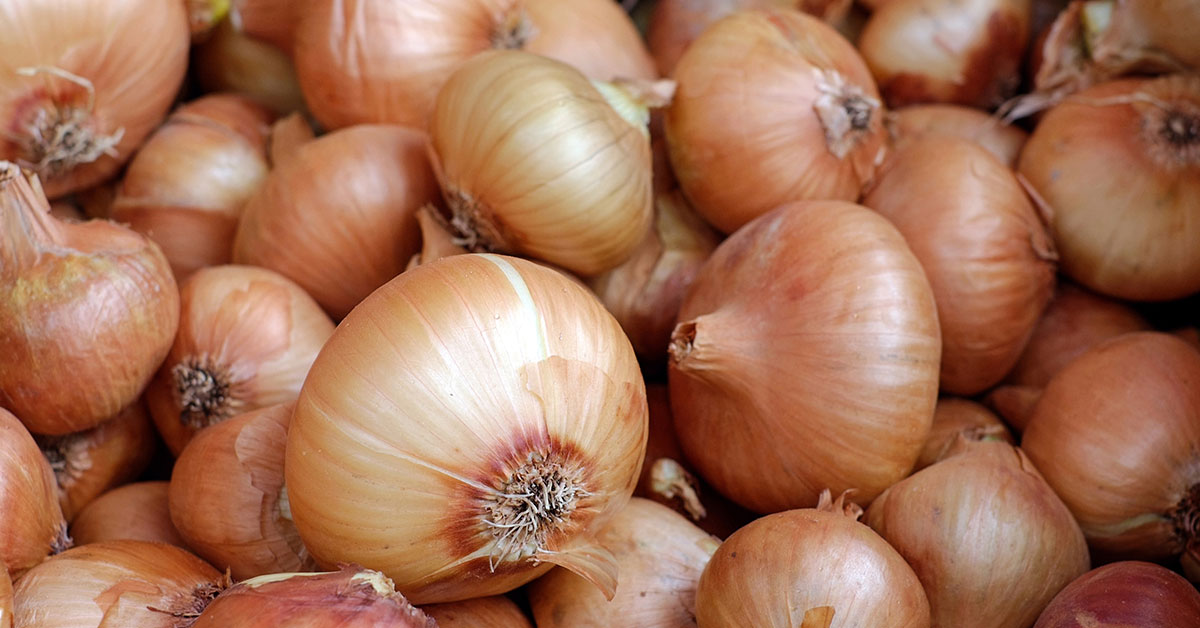Onions, a staple ingredient in countless culinary creations, are a versatile and essential addition to any home garden. Whether you prefer the pungent flavor of red onions or the milder taste of sweet onions, knowing when to harvest these underground gems is crucial to ensure optimal flavor and storage longevity. Harvesting onions at the right time not only guarantees their peak flavor and texture but also allows for proper curing and storage.
In this article, we will explore the signs to look for when determining the ideal time to harvest onions, as well as some useful tips to ensure a bountiful and successful harvest. So, grab your gardening tools and get ready to dig into the world of onion harvesting!
When to Harvest Onions
Onions are typically ready to harvest when the tops start to yellow and fall over. This usually occurs about 100-120 days after planting, depending on the variety. You can gently push the tops over to speed up the process. Once the tops have fallen over, allow the onions to remain in the ground for another week or two to allow the outer layers to dry and cure. After this curing period, you can dig up the onions, remove any excess soil, and store them in a cool, dry place for long-term storage.
Signs Your Onions Are Ready to Be Harvested
There are a few signs that indicate when onions are ready to be harvested:
- Bulb size: Onions should have reached their mature size. The bulbs should be firm and have a good size, typically around 2-3 inches in diameter for most varieties.
- Tops turning yellow and falling over: As the onions near maturity, the green tops will start to turn yellow and begin to fall over. This is a natural process indicating that the onion has finished growing.
- Paper-like skin: The outer skin of the onion bulbs should have dried and become papery. Gently brush away the soil around the bulb to check if the skin has dried and is easy to peel.
- Neck softening: Before harvesting, check the neck of the onion where the leaves meet the bulb. If the neck feels soft and the leaves have completely dried, it is a good indication that the onion is ready to be harvested.
It’s important to note that onions can be harvested at different stages depending on personal preference. If you prefer smaller, milder onions, you can harvest them earlier. However, for larger storage onions, it’s best to wait until they have fully matured.
Signs Your Onions Aren’t Ripe Yet
There are a few signs that onions are not yet ripe and should not be harvested:
- Green tops: If the tops of the onion plants are still green and upright, it indicates that the bulbs are still developing and have not reached maturity. Wait until the tops start to turn yellow and flop over naturally before harvesting.
- Bulb size: Immature onions will have smaller bulbs compared to fully mature ones. If the bulbs are still small and haven’t reached the desired size for the specific onion variety, it’s best to leave them in the ground to continue growing.
- Soft texture: Gently squeeze the onion bulb between your fingers. If it feels soft or spongy, it means the onion is not yet ripe. Ripe onions should have a firm texture.
- Thin, papery skin: Onions that are not yet ripe will have thin, translucent skin that is not fully developed. Mature onions have thicker, dry, and papery skin that protects the bulb during storage.
- Lack of strong aroma: Ripe onions usually have a strong, distinct smell. If the onion doesn’t have a noticeable aroma, it may not be fully matured.
Remember, the exact timing for harvesting onions can vary depending on the specific variety and growing conditions. It’s always a good idea to consult the specific guidelines for the onion variety you are growing.













